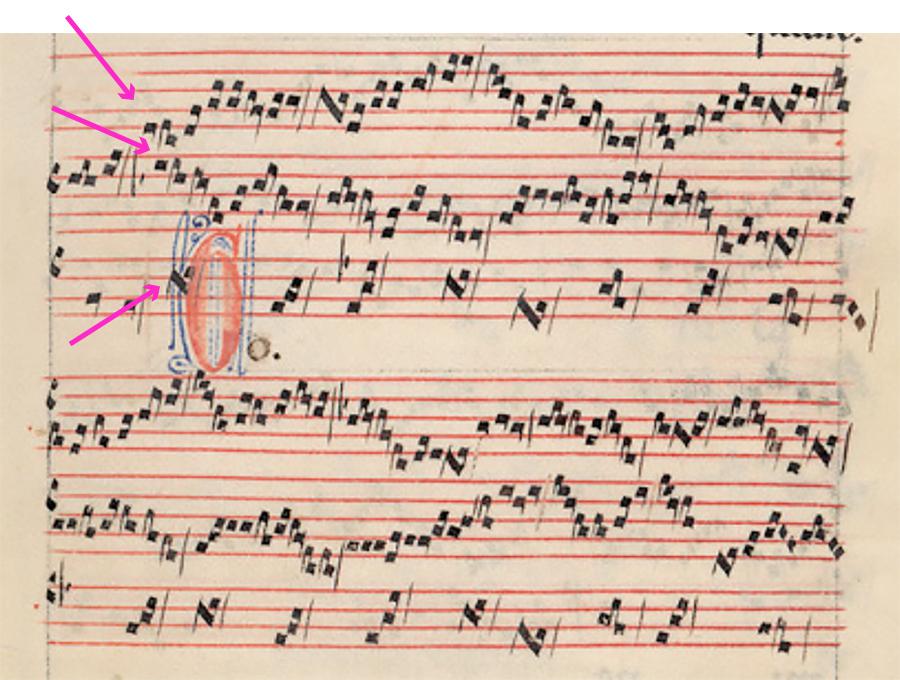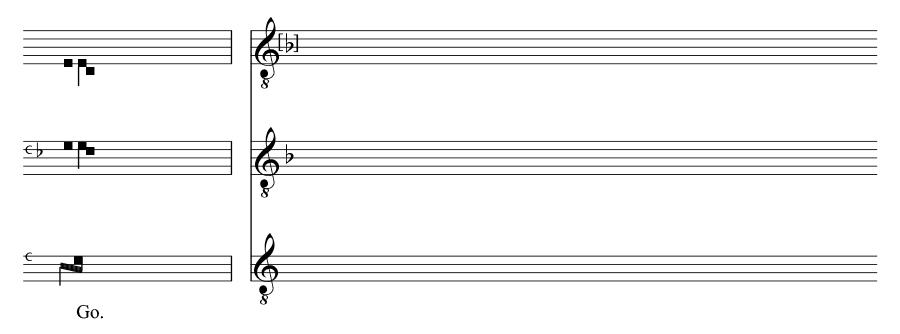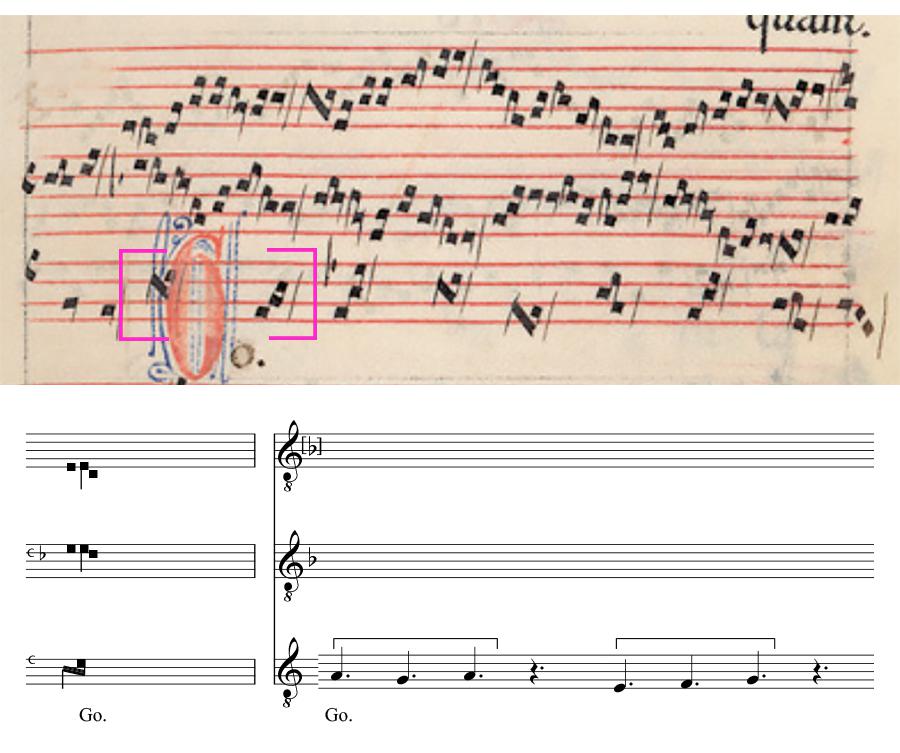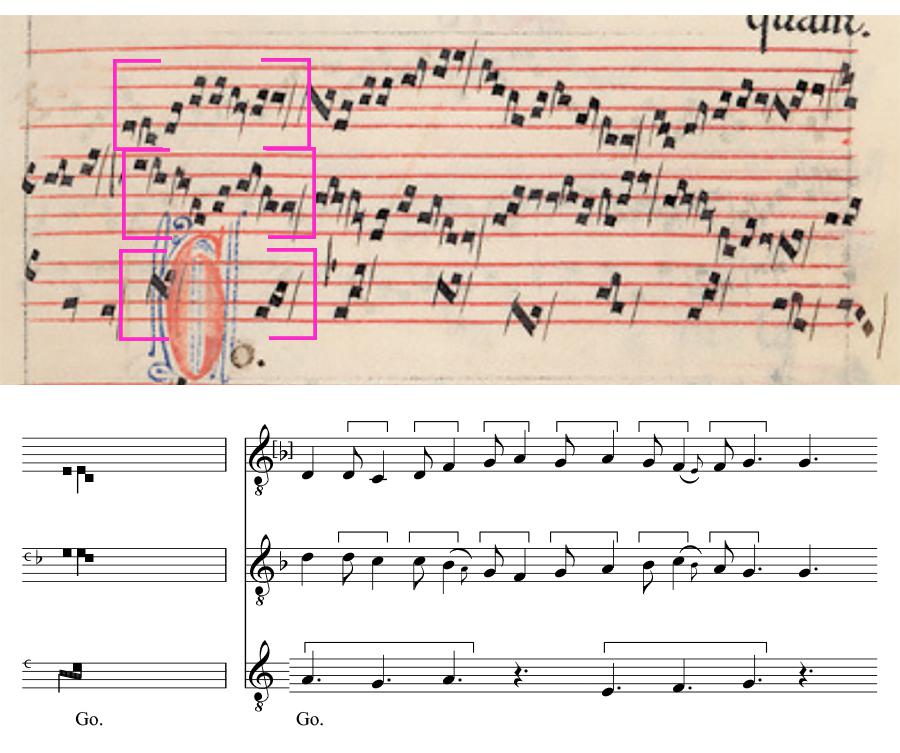'COORDINATION IN RHYTHM' – MODAL NOTATION
3.8
Transcribing medieval notation
an overview
What are the necessary steps when transcribing modal notation? And how do you start your transcription? Through this article we offer you a step by step overview on the fundamentals of transcribing any kind of medieval music.
Try to determine the type of notation and the number of voices. In this case it is a three-voice composition in modal notation.

Detail of the facsimile of the clausula Go.
© Firenze Biblioteca Medicea Laurenziana, Plut. 29.1, fol. 11r
Identify the exact beginning of the piece.
Put an incipit at the beginning of your transcription and establish the range of the voices.

Begin writing the clefs and, if there are any, the flats. If the clef is missing, as here in the upper voice, simply add it, if the flat is missing in one voice you can add it in square brackets.
Look at the first ordo and recognise the rhythmic mode. Here we have a first mode. This can be easily recognised by the sequence of a ternary ligature followed by binary ligatures.

Start always to transcribe from the lowest voice, the tenor, which has usually the longest note values. So you will have a better control on the general structure of the piece.
Go on transcribing the upper voices. Pay attention to the specific rules of modal notation. Some of those rules you know already – other you will explore in the upcoming steps.

